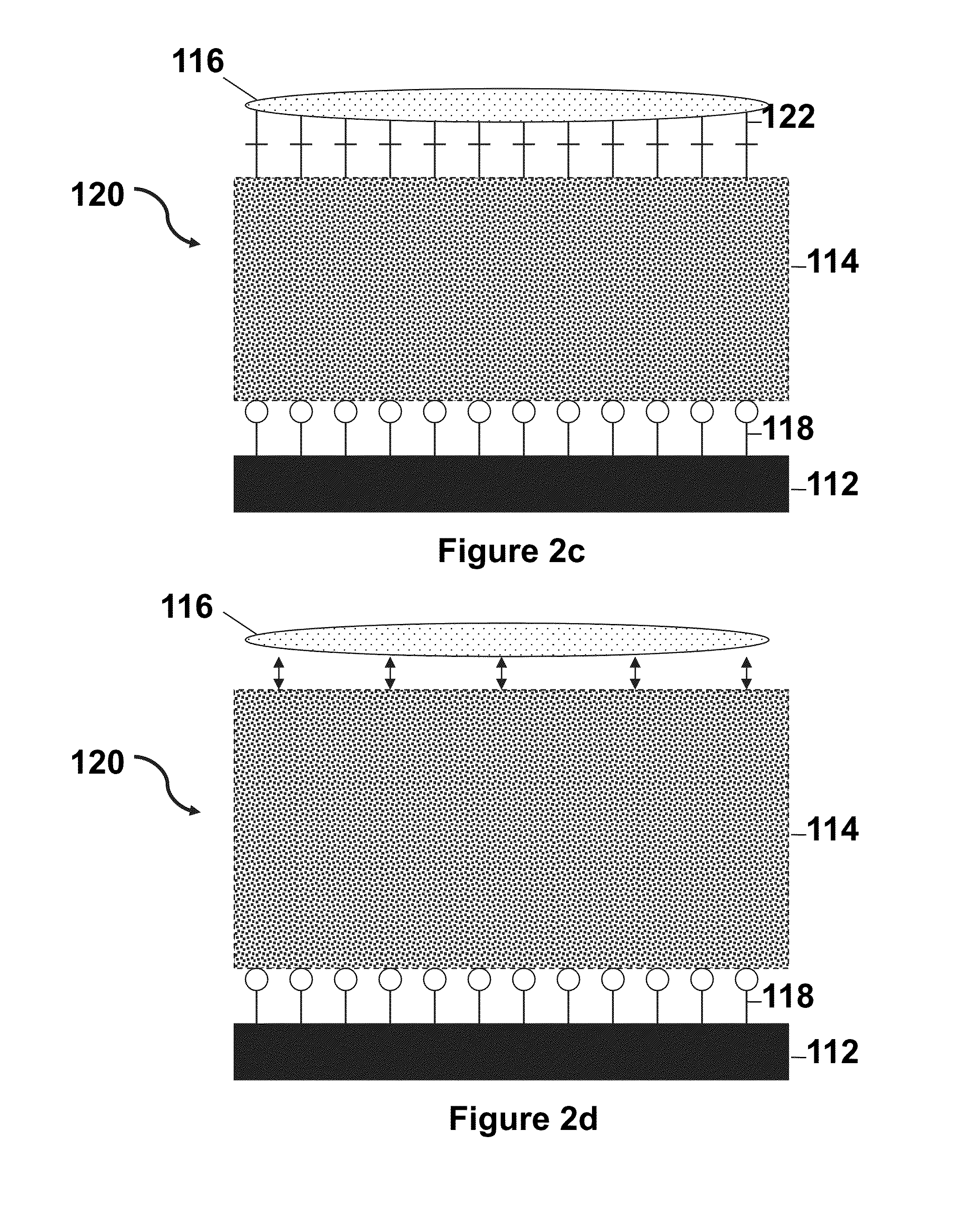Thermoresponsive cell culture supports
a cell culture and thermoresponsive technology, applied in the field of cell culture supports, can solve the problems of preventing a cost-effective adoption of this technology for specific applications, damage to cells and their excretion, and immunogenic reactions of cell sheet products, so as to eliminate the risk of immunogenic materials present, improve cell-cell interactions, and simple technology
- Summary
- Abstract
- Description
- Claims
- Application Information
AI Technical Summary
Benefits of technology
Problems solved by technology
Method used
Image
Examples
example 1
Materials
[0089]pNIPAAm, a molecular weight of 20-25 kg / mol, and 3-aminopropyltriethoxysilane (APTES) were purchased from Sigma Aldrich (St. Louis, Mo., USA). Glass slides and P(100) test type silicon-wafers were purchased from Fisher Scientific (Waltham, Mass., USA) and Silicon Quest International (Santa Clara, Calif.), respectively. All other chemical reagents were purchased from Sigma Aldrich unless otherwise indicated.
Preparation of Glass and Silicon Wafer (Si-Wafer) Substrates.
[0090]Glass slides and Si-wafers were cut into squares with a surface area of ˜1 cm2. Slides and wafers were immersed in freshly prepared piranha solution (70 vol. % of concentrated H2SO4 and 30 vol. % of 30% H2O2) for 1 hour at 100° C. to remove organic contaminants. After decanting the piranha solution, the slides were thoroughly rinsed with deionized (DI) water and dried with nitrogen (N2) gas. Afterwards, the slides and / or wafers were oxidized in a UV / Ozone Cleaner (Jelight Company Inc, Irvine, Calif.)...
PUM
| Property | Measurement | Unit |
|---|---|---|
| surface area | aaaaa | aaaaa |
| temperature | aaaaa | aaaaa |
| temperature | aaaaa | aaaaa |
Abstract
Description
Claims
Application Information
 Login to View More
Login to View More - R&D
- Intellectual Property
- Life Sciences
- Materials
- Tech Scout
- Unparalleled Data Quality
- Higher Quality Content
- 60% Fewer Hallucinations
Browse by: Latest US Patents, China's latest patents, Technical Efficacy Thesaurus, Application Domain, Technology Topic, Popular Technical Reports.
© 2025 PatSnap. All rights reserved.Legal|Privacy policy|Modern Slavery Act Transparency Statement|Sitemap|About US| Contact US: help@patsnap.com



